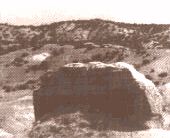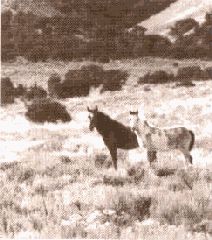|
| ABOUT THE HERD |
Bands of Color
The herd runs about 200 head. Pintos, grays, blacks, palominos, red and blue roans, bays and sorrels can be seen.
Size
The horses are typically 15 to 16 hands high; weight 900 to 1100 pounds
Diet
These horses live in a sage and saltbush vegetation zone. Bluebunch, wheatgrass, western wheatgrass, Indian ricegrass and blue grasses comprise the majority of their food supply. Springs and reservoirs provide much of the water throughout the year.
Habitat
This herd management area encompasses 160,000 acres of semiarid land. The topography varies from gently rolling hills to steep ridges and low bluffs. Elevations vary from 5,400 and 7,000 feet. Temperatures range from above 100 degrees Fahrenheit in summer to -30 degrees Fahrenheit in winter.
Wildlife
Migrating antelope herds, sage grouse (strutting grouse), raptors, great
horned owls, burrowing owls, pinghorn and mule deer can be found in Sandwash
Basin.
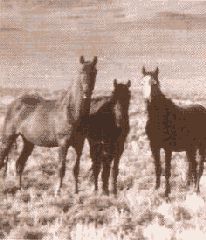
| OBSERVATION TIPS |
Spring and Summer
The horses are distributed throughout Sandwash Basin. Horses can be seen on ridge tops during the warmest time of the day.
Winter Places
Roads are not maintained during the winter and can be difficult to travel.
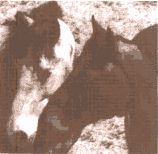 Best Chance for Viewing
Best Chance for Viewing
Travel County Road 67 to Sheepherder Springs. County Roads 48, 80, 52, 126 and 67 are good routes to follow when looking for horses.
Best Travel
Stay on marked roads for the safest viewing trip. Four-wheel drive is recommended but two-wheel drive vehicles can be used. Roads can become impassable during wet weather.
Continue On
This is not a BLM operated or BLM sponsored site. It is run by private wild horse and burro enthusiasts. We are thankful to the BLM for providing the information which is presented here.

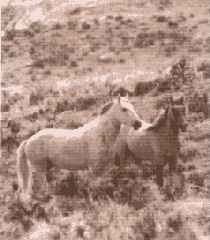 The Sandwash Basin HMA is the largest in the state. It covers 160,000 acres
of public lands between Vermillion Bluffs and Sevenmile Ridge. This area's
history reaches back to prehistoric times and is a modern treasure chest for
any adventurous geologist or archaeologist.
The Sandwash Basin HMA is the largest in the state. It covers 160,000 acres
of public lands between Vermillion Bluffs and Sevenmile Ridge. This area's
history reaches back to prehistoric times and is a modern treasure chest for
any adventurous geologist or archaeologist.